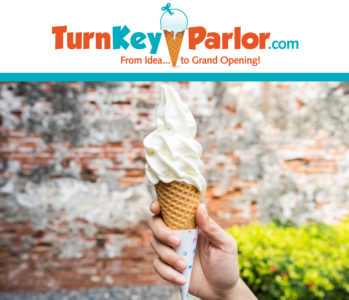Opening an Ice Cream Store
July 23rd, 2010 by Neil Williams
This article was written to provide a few basics on opening an ice cream parlor. There’s a lot more to it that is listed here, but reading this might give you a little bit of an idea of what is required. If you own an ice cream store, and would like to comment, please do. We encourage you to challenge our assumptions and contribute to our knowledge base. The most important decision you will make on the road to success is most likely to be the location you choose. You’ve probably already heard of the 3 most important factors involved in a successful retail operation: location, location, location. I cannot stress enough the importance of this, especially when it comes to ice cream. Ice cream is an “impulse” product. In other words, people who buy ice cream usually do it on impulse when they see it and are tempted. It is less likely these days that people will make a conscious thought to go to an ice cream parlor. Sure, some still do, but more sales are made to customers who happen to be brought to the area for another reason. I have listed the key factors to look for when considering your location below. If your location meets most of these, you are off to a good start: Traffic
- Car traffic is nice, but more importantly, how many people are walking by?
- If you are counting on high car traffic, make sure that your location is easily visible from the street and easy to access (parking, etc.)
- Are they typically there to browse or to buy?
- Being in a Walmart type plaza doesn’t guarantee success. It depends on how close to the Wal-Mart door you are.
- Talk to existing businesses and ask them what the traffic is like.
- If you are counting on car traffic as your main traffic, a drive thru window is almost mandatory.
- Enclosed malls are better for year round traffic and people prefer them to stroll through and buy ice cream! In general, it’s better to pay more rent and be in an enclosed mall than to pay less and be in a strip mall.
- 3-4 good anchor stores would help.
- Population: If the area is somewhat congested, that’s a good sign.
- Visibility: Will everyone who walks close by know that there is ice cream there? Would you buy ice cream there?
- Hours of operation: Make sure that the peak traffic flow is during hours that you’re willing and able to be open.Make sure you have adequate space. 800-1000 sq ft is a pretty good middle ground. Is the area growing?
| One Month: | |
| Sales: | $18,000 |
| Cost of Goods: (30%) | $(5,420) |
| Gross Profit | $12,580 |
| Less : Overhead | |
| Rent | $(1,800) |
| Utilities | $(600) |
| Labor | $(4,000) |
| Equipment/Biz start Loan | $(1,200) |
| Advertising | $(500) |
| Administrative | $(200) |
| Misc | $(200) |
| Total Overhead | $(8500) |
| Total Monthly Profit: | $4080 |
| Rent ($1500) x 3 (first/last/security) | $4500 |
| Utilities (Deposit) | $1000 |
| Contractor (Cabinetry, etc) | $10,000 |
| Ice Cream, Drinks, Cones, Candies, etc. | $2,500 |
| Advertising | $500 |
| Paper goods, cleaning supplies, office sup, misc | $750 |
| Plumbing (sink, dipper wells, etc.) | $1500 |
| Insurance Premium | $400 |
| Signage | $2000 |
| Deposits/Liscences | $1500 |
| Cosmetic work to space | $1000 |
| Working capital | $7500 |
| Architectural & Legal | $2500 |
| Equipment: | |
| Dipping & Storage Freezers | $8000 |
| Flavorail | $2800 |
| Under counter Fridge | $1600 |
| Waffle Cone Baker | $600 |
| Hot Fudge Warmer | $400 |
| Glasses/Metal Shake Tins | $350 |
| Shake Mixer | $600 |
| Register | $300 |
| Total | $50,300 |
Social Media:















